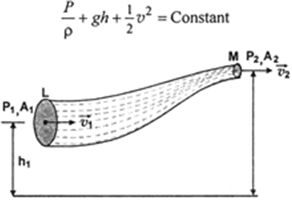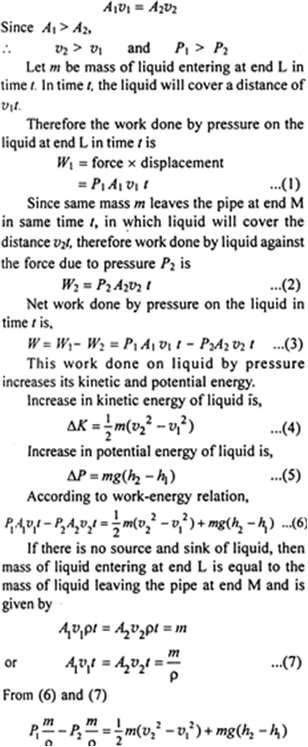State Bernoulli's theorem

CBSE, JEE, NEET, CUET
Question Bank, Mock Tests, Exam Papers
NCERT Solutions, Sample Papers, Notes, Videos
Posted by Arya Jha 5 years, 1 month ago
- 2 answers
Yogita Ingle 5 years, 1 month ago
Bernoulli’s principle states that The total mechanical energy of the moving fluid comprising the gravitational potential energy of elevation, the energy associated with the fluid pressure and the kinetic energy of the fluid motion, remains constant.
Bernoulli’s equation formula is a relation between pressure, kinetic energy, and gravitational potential energy of a fluid in a container.
The formula for Bernoulli’s principle is given as:
| p + 12 ρ v2 + ρgh =constant |
Where,
- p is the pressure exerted by the fluid
- v is the velocity of the fluid
- ρ is the density of the fluid
- h is the height of the container
Related Questions
Posted by Mansi Class 9Th 1 year, 5 months ago
- 0 answers
Posted by Pankaj Tripathi 1 year, 5 months ago
- 1 answers
Posted by M D 1 year, 4 months ago
- 1 answers
Posted by Nekita Baraily 1 year, 4 months ago
- 2 answers
Posted by Mohammed Javith 1 year, 5 months ago
- 0 answers

myCBSEguide
Trusted by 1 Crore+ Students

Test Generator
Create papers online. It's FREE.

CUET Mock Tests
75,000+ questions to practice only on myCBSEguide app
 myCBSEguide
myCBSEguide

Gaurav Seth 5 years, 1 month ago
Statement: For the streamline flow of non-viscous and incompressible liquid, the sum of potential energy, kinetic energy and pressure energy is constant.



Proof: Let us consider the ideal liquid of density ρ flowing through the pipe LM of varying cross-section. Let P1 and P2 be the pressures at ends L and M and A1 and A2 be the areas of cross-sections at ends L and M respectively. Let the liquid enter with velocity V1 and leave with velocity v2. Let A1 > A2. By equation of continuity,
1Thank You